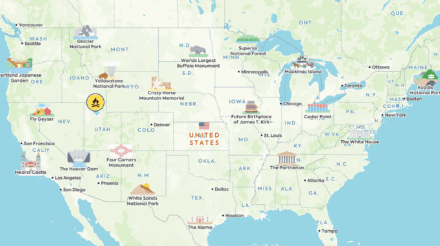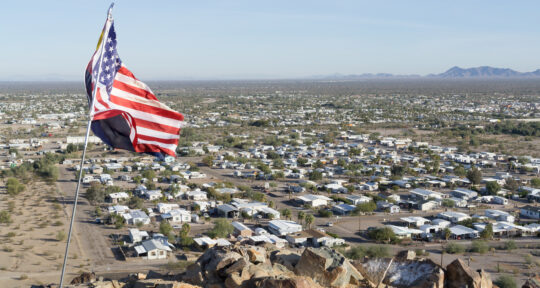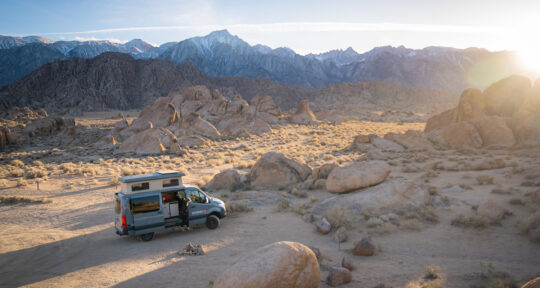In my travels, I’ve seen Subaru Foresters, Toyota 4Runners, and other internal combustion engine (ICE) cars converted for car camping, and they pull it off just fine. But when I crawl into the back of my Tesla Model Y, I see how electric vehicles are changing the car camping game and solving many of the problems traditional car campers might experience. There’s still no onboard bathroom—but we are camping, after all.
If you’re planning on buying an electric vehicle or already own one and are looking to start car camping in it, here are four things to consider before you hit the road.
Can you take a road trip in an electric vehicle?
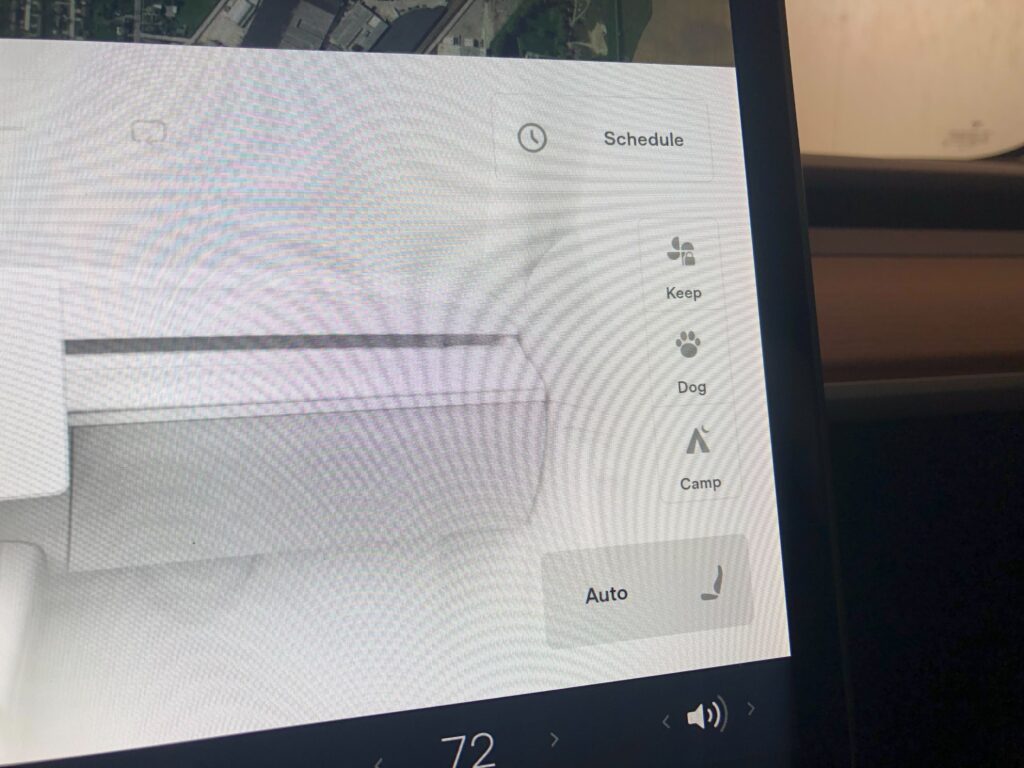
1. If there’s a camp mode—use it
If you have a Tesla, you’ll find a “Camp” mode in your car’s climate control settings. It was released as a software update and does the following:
- Maintains airflow and temperature
- Allows interior lighting to be turned on or off
- Plays music or streaming services
- Powers devices
The best part? It only uses about 10 percent (or up to 15 percent if it’s cold outside) of your battery for about 9 hours of continuous running. I charge all of my devices—phone, laptop, smartwatch, and more—while I sleep, and I even run a fridge. So there’s no need to worry about having to bundle up for a cold night, or waking up to a dead battery.
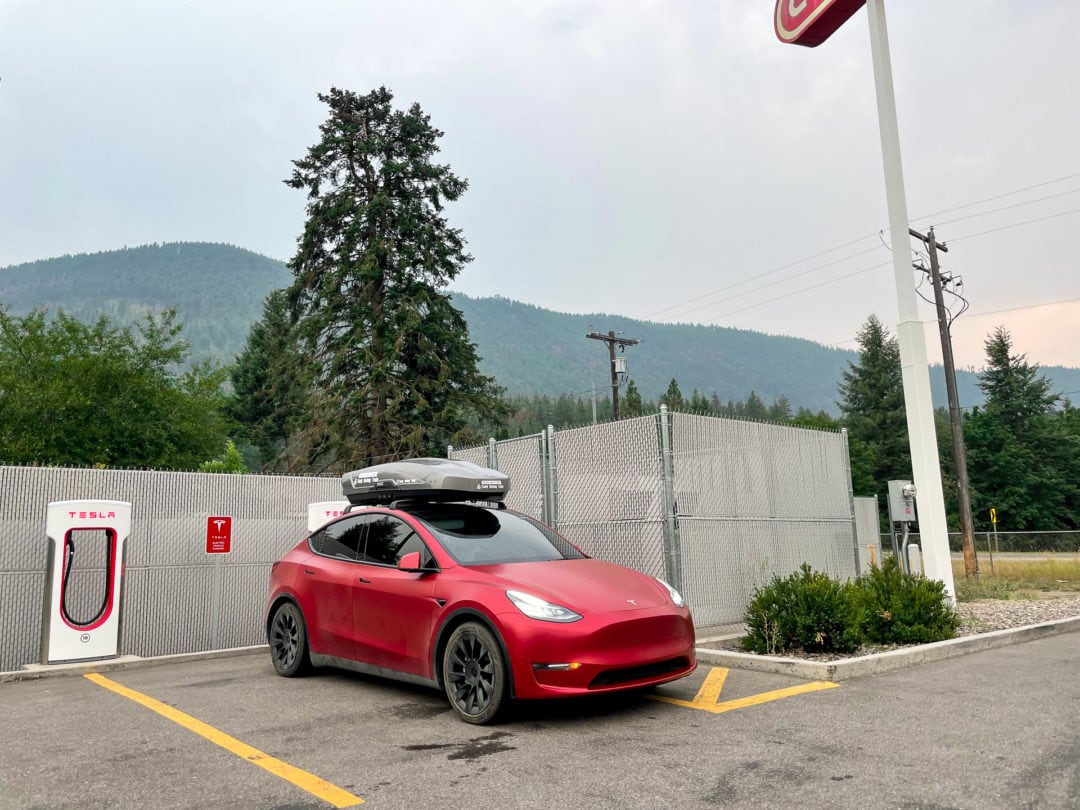
2. Fully charge before getting to your campsite
Whether your EV has a camp mode or not, I recommend charging the vehicle to 100 percent before arriving at your campsite, in case of emergencies. Although I love camping in my Tesla, I don’t have the ability to refuel as effectively as my ICE counterparts. Unlike with ICE cars, EV owners can’t just carry a tank of electricity with us for a quick refuel, so we have to spend a little more time on logistics. But Tesla’s Supercharger network is massive, and if your car uses a different charger, there are plenty of ways to find charging stations nearby. Also, thanks to regenerative braking, you’d be surprised at how much of a charge you can gain going downhill.
I haven’t had much success finding EV chargers at campgrounds. If you’re at a private campground, you might be able to charge with a conventional outlet before setting up camp. If you’re at an RV campground, you might be able to plug into a 240-volt, 50-amp outlet. In my experience, it can be difficult getting an RV spot without an RV, so be sure to ask. Chargers are a bit harder to come by in national parks and forests, but charging networks are expanding to these points of interest.
3. Enjoy more storage
Without an internal combustion engine, Teslas and other EVs reclaim a lot of the space that houses the moving parts of a traditional car. With this added space for storage—notably the frunk (front trunk) and trunk—you can utilize the interior car space for sleeping. I like to use the frunk to store my water source as well as my first-aid kit, along with some car cleaning supplies. Meanwhile in the trunk, Teslas have deep wells that are large enough to fit a refrigerator, camp stove, cooking supplies, and charger.
I also suggest getting creative with what you can do with an all-glass roof; I have a tablet mount to watch TV and movies.
Interested in buying an EV? Here’s where to start and what to look for
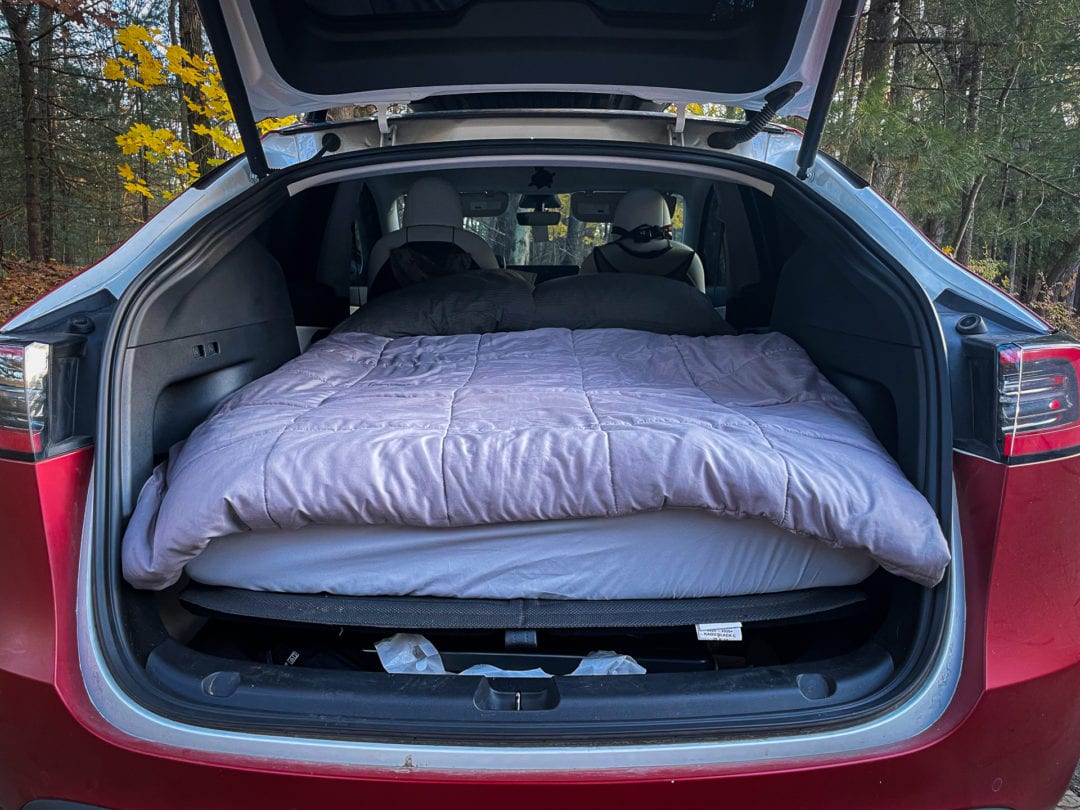
4. Sleep comfortably
This is still camping so don’t expect to bring your luxury Tempur-Pedic mattress—but you can fit a twin-sized, 6-inch memory foam mattress that sleeps two people relatively comfortably. I sleep on a tri-fold mattress that allows me to flip one portion up to use as a platform and to give me access to my trunk well. Before I call it a night, I select a seat configuration profile I labeled “Bed.” This setting shifts my seat up almost all the way to the front of the vehicle to better accommodate my bed. This way I don’t have to move the seats up every time I want to set up the bed.

